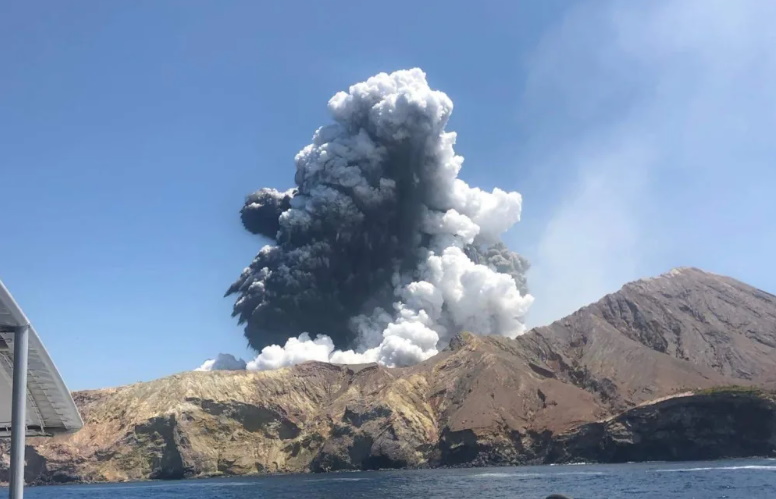
By Victor Waters of RNZ
Warning: This story contains graphic details of injuries that may disturb some readers.
A coronial inquest into the Whakaari/White Island disaster has heard how the quick-thinking of a tour boat passenger helped treat survivors with fresh water.
Geoffrey Hopkins had finished a tour of the volcano, off the Bay of Plenty, and was aboard vessel The Phoenix heading back to Whakatāne when the eruption happened.
The tragedy killed 22 people and seriously injured 25 others on December 9 in 2019.
He was among the first to treat survivors, but soon realised the first aid kit on the boat was not adequate to treat burn injuries.
Instead, Hopkins said he rationed the boat's fresh water supply, using other passengers' bottles and a first aid kit container to wash off ash and cool the burns.
Previously the inquiry was told that survivors credited Hopkins' early actions for saving their lives.
Hopkins said he was well-trained in first aid before the eruption. He also retained knowledge from booking the tour that people were advised to bring water bottles as there was fresh water on the boat to drink.
"I realised that there was nothing in that first aid kit that was going to be of any use to me in that moment," Hopkins said.
"I knew where the water was, I knew where the taps were, and as I made that decision there was nothing in the first aid kit that was going to be of any use, but the plastic container was going to be invaluable for moving water.
"I tipped out the first aid kit, sat down that first person, went to the tap, filled up the empty first aid kit with water and started treating with water."
Hopkins said he did not know how many litres of water were on board and organised to ration the water so they could treat as many survivors as possible.
"For every survivor that I treated it was a dribble of water, so we weren't able to hose people off or wash them, but it was just very carefully pouring water over their faces, over their arms, over their legs, where they were most obviously burnt, to try and cool the burns.
"The process by which that actually removed ash was not intentional, but well worthwhile."
Volcanologist Shane Cronin gave evidence earlier in the inquest, saying those that removed the ash from their bodies quickly had fewer injuries. Cronin said some particles in the cloud were over 400°C, with the average temperature sitting around 200°C.
Hopkins said his expectations of injuries following the eruption were not what he was confronted with.
"I thought we would be dealing with cuts, bruises, injuries from flying objects, so I was expecting to be dressing wounds, applying pressure to bleeds, that sort of thing."
He said the realisation dawned on him when the first survivors began to come on board.
"In that moment, which was maybe less than a second, but in my mind it plays out over several minutes, looking at that person and seeing their injuries and then realising that what I was going to be dealing with was nothing like I expected.
"That person was burnt like I've never seen before - and not like a burn from a flame or a fire where you might have raw, openness or crispiness, if you like. It just looked like melted wax.
"Their arms, their hands, their face looked like it was melting, and their skin was hanging off everywhere there was a point. So off the ear, off the nose, off the chin, off the end of the fingers, off the elbow, wherever there was a low point, skin was just like you see a candle and it drips over the side.
"You become a little bit desensitised, I guess your training kicks in - you're making quite quick decisions but not necessarily overthinking it and not taking it in, certainly emotionally taking it in, so yeah, you started to just work out what do I need to do, how can we treat these people, what's the next step we need to do?"
The coronial inquest in Auckland aims to re-establish the facts of the case and make findings and recommendations to prevent similar disasters.














